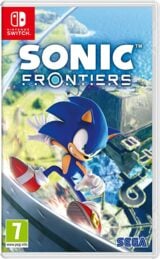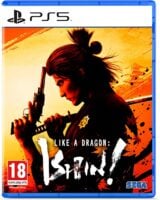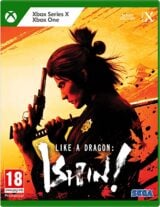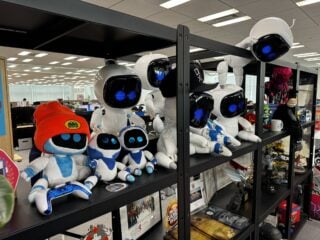A quarter of a century ago tomorrow, on 9/9/99, we launched the @SEGA Dreamcast here in North America. While the journey did not end the way we wished it had, we remain proud of the path we paved in online gaming, and it remains a console that is beloved by so many.
— Peter Moore (@PeterMooreLFC) September 8, 2024
Here is an… pic.twitter.com/GTdc9gcJvc
Dreamcast at 25: How Sega’s final console was one of gaming’s most beautiful failures
We mark the 25th anniversary of the US launch with an excerpt from The Dreamcast Encyclopedia

Today marks the 25th anniversary of the Sega Dreamcast’s release in North America.
Although the console was released in Japan first (on November 27, 1998), it was the console’s North American release date of 9/9/99 that sticks in the mind of many players’ minds.
To mark this anniversary, below we provide an excerpt from The Dreamcast Encyclopedia, a book written by VGC’s Chris Scullion, covering every game officially released for the console.
How do you recover from three flops in a row? Not a problem if you’re a high jumper – it’s literally your job – but if you’re a video game hardware manufacturer, you need to find success eventually or something’s going to have to give.
This was the crisis faced by Sega as it found itself in third place in an industry where, just half a decade earlier, it was leading Nintendo in some regions and providing strong competition in others. Now, after selling only 2.24 million Mega CD / Sega CD add-ons for its Mega Drive / Genesis, then a fairly awful 800,000 32X add-ons, Sega was fighting a losing battle with the Saturn.
It could excuse the Mega CD and 32X sales because those add-ons were always designed to simply prolong the Mega Drive’s life while Sega worked on its next proper successor.
But the Saturn was that successor, and following a disastrous “surprise, it’s out today” launch in the US that caught players off-guard and infuriated unsuspecting retailers, the console just never managed to find traction in the west and, with around 9.2 million units sold, ended up a distant third behind the Nintendo 64 (32.9 million) and the overwhelmingly dominant newcomer, the Sony PlayStation (102.4 million).
In mid-1997, with Sega owning just 12% of the console market, Sega of America president Bernie Stolar stated during the E3 games convention that “the Saturn is not our future”. In March 1998, Sega of America then declared that it was discontinuing the Saturn less than three years into its life so it could focus on its next-generation console.
It was a bold strategy that threatened to annoy even more people – the players who owned a Saturn, the developers who had Saturn games in development, the retailers with Saturn stock it still needed to sell – but Sega’s plan was clear: get a big head-start on the next generation by releasing its next console long before Sony and Nintendo release theirs (the systems that would eventually become the PS2 and GameCube).
For its next system, Sega turned to IBM and asked it to work on a prototype for next generation console hardware. With the codename Black Belt, this prototype used graphics technology created by US company 3dfx Interactive.
Unhappy to hear that Sega was potentially outsourcing its new console development to a US third party, Sega of Japan’s head of hardware development Hideki Sata got his team to start work on a prototype of their own, codenamed Katana.
Eventually, Sega would decide that Katana would be the prototype it would press ahead with, and after settling a potentially messy lawsuit with 3dfx (which claimed Sega had promised to use its tech and was now abandoning it), it was full speed ahead on the Saturn’s successor.

The console would also get a new name, Dreamcast: a name that conjured up visions of graphics so impressive they could only be imagined, as well as its online (i.e. broadcast) capabilities.
The Dreamcast was indeed a huge step up from the PlayStation, Saturn and Nintendo 64 in terms of power and performance. Depending on the situation the console was capable of delivering anything up to 6-7 million polygons per second, compared to 360,000 on the PlayStation, and could output at 480p, the highest resolution possible on a standard definition TV at the time.
What’s more, the console’s processing power meant a lot more of its games ran at 60 frames per second, something that was rarer when it came to polygonal games on the PlayStation, N64 and Saturn.
In a clever move, Sega also decided to make it so that the Dreamcast’s hardware would be architecturally similar to that of its Naomi arcade board. Although the Naomi had extra memory, this still meant that it was fairly straightforward for developers of Naomi-based arcade games to then port them to the Dreamcast, making the console an exceptional source of near arcade-quality titles.
Having the most visually impressive graphics of any home console by far was one thing, but the Dreamcast’s legacy instead lay with the groundwork it set when it came to online connectivity.
Every Dreamcast console came with its own built-in modem (33.3Kbps in Japan, 56Kbps in the west), which could be connected to the phone line and used to not only browse the internet through the console (at a time when not everyone had a PC that let them do so), but also compete against other players in some games and even download the occasional DLC for their games.
The web browsing was basic, the multiplayer lag was frequent and the DLC was tiny, but the seeds had been planted, and even though the PS2 and GameCube would launch without online features, Microsoft’s Xbox – said by some to be the natural successor to the Dreamcast – would eventually launch Xbox Live and continue where Sega had left off.
“The web browsing was basic, the multiplayer lag was frequent and the DLC was tiny, but the seeds had been planted, and even though the PS2 and GameCube would launch without online features, Microsoft’s Xbox – said by some to be the natural successor to the Dreamcast – would eventually launch Xbox Live and continue where Sega had left off.”
Sega also attempted to innovate with its memory card: taking advantage of the popularity of the Tamagotchi and other virtual pets, its Dreamcast memory card – the Visual Memory Unit, or VMU – had a built-in screen. This allowed players to see information while they played, then when they were done they could unplug the VMU and use it to play basic mini-games on the move.
The Dreamcast launched on November 27, 1998 in Japan, September 9, 1999 in North America (allowing for a famous 9/9/99 marketing campaign) and October 14, 1999 in the UK. Despite getting off to a strong start and offering a healthy selection of fantastic games, however, the Dreamcast was always looking over its shoulder.
The PlayStation 2 was coming in 2000 and promised to be even more powerful than Sega’s console, leaving it in a strange sort of intergenerational limbo where it was too powerful to be considered part of the Saturn / PlayStation / N64 generation, but not powerful enough to be part of the eventual PS2 / GameCube / Xbox generation. It was in its own little niche: a niche with a high quality library of arcade-like games and a dedicated fanbase, but a niche nonetheless.
It soon became clear that the Dreamcast, while impressive, wasn’t going to be able to compete with Sony’s new powerhouse, and that once the GameCube arrived in 2001 it was likely to fall even further behind. Deciding that the answer to the question “how do you recover from three flops in a row” was “we don’t”, and realising it was struggling financially, Sega decided to cut its losses.
On 31 January 2001 – less than 16 months after the console had arrived in North America – Sega announced that it was discontinuing the Dreamcast, and would be restructuring the company to no longer make consoles, and instead become a “platform-agnostic” third-party game developer.
The result in hindsight was probably the correct one: rather than pumping more money into the Dreamcast and potentially going bankrupt, Sega instead continues to enjoy success as a developer decades later.
The Dreamcast may have been a failure on paper, but it’s no surprise that many of the 9.13 million people who bought it consider it one of the greatest consoles of all time, mainly due to the quality of its numerous exclusive games.



























